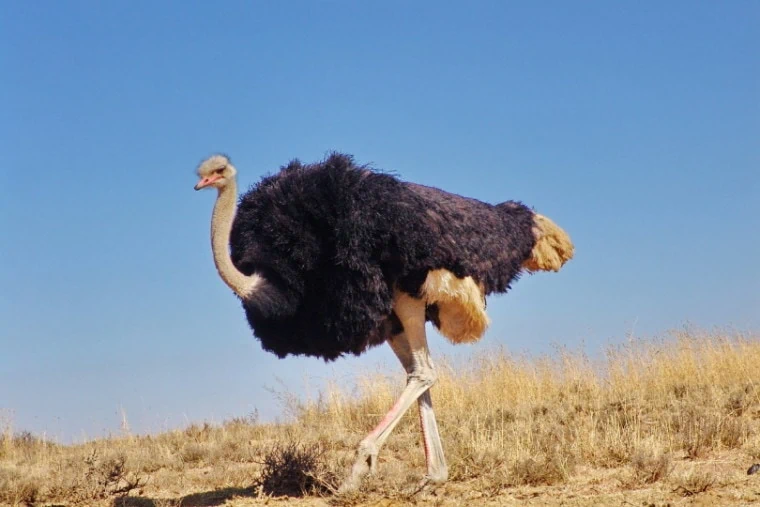Why Fly? Flightless Bird Mystery Solved Say Evolutionary Scientists. Large birds that fly are found all over one of the southern continents. Since the days of Darwin, many have been wondering how they are related?
Ostriches as well as emus the cassowaries
rheas and kiwis cannot fly. In contrast to other birds, their breastbones are flat and do not have the keel to anchor the pectoral muscles that are strong enough to fly. Green Birds Their small wings cannot lift their body off of the floor.
Their bird species that fly without wings are referred to as ratites and clearly stand out from other species of avians. (Read ” Big Bird” in National Geographic magazine.)
Darwin was aware of this that he was a rat, and predicted that ratites are related to one another. His contemporaries, Thomas Huxley also found a commonality between them: the arrangement of the bones on the mouths’ roofs looked more reptile-like than those of other species of birds.
Around the same time the biologist
Richard Owen was assembling the remains of a massive fossil skeleton resembling an ostrich, the first moa that was extinct in the world of the west.
However, a nagging detail left a gap in his mind of Huxley the ground-dwelling, small South American tinamous was not able to fit in with the birds, ratites, or any other species.
Tinamous fly, though at a slower pace
They also have keeled sternums that suggest they evolved from flying birds. Their palate bones are in line with the ratites. What is their place of origin?
Scientists have been discussing this issue for more than 150 years. A new study published in The journal Molecular Biology and Evolution analyzing the largest molecular database to date determines the place of Tinamous in the tree of evolution and gives clues as to the source of flightlessness. More
To determine the specifics the scientists
analyzed nearly 1500 DNA fragments from Ostriches, emus, tinamous as well as moas, the little bush that has gone extinct as well as other species.
After sandblasting and crushing moa’s toe bone in order to extract and sequence DNA, researchers compared the DNA with the DNA of other species, and then ran a variety of computer models that simulate the evolution of molecular genes.
A few earlier research, which found
tinamous in the outer regions of the ratite genus focused on morphological features like skeletal features. Other studies that examined the limited genetic data suggested that the tinamous had
evolved into a tangle with flying birds. “Fundamentally, the recent debate is about molecular data versus morphology,” says Allan Baker, the lead researcher of this study. “We can’t both be right.”
DNA Settles Relationship
The results were shocking, Baker says. Tinamous evolved within ratites, and not as a distinct lineage. “And the DNA says absolutely that moas and tinamous are closely related,” Baker says. Baker first came across moa fossils while a youngster running around New Zealand caves.
Breastbones from Moa, toe bones legs bones and the occasional skull sat in the mud, which was the final burial site for birds hunted and slaughtered by humans approximately 12000 years ago.
Today, a skeleton of the Dinornis
robustus skeleton looms over people who visit the Royal Ontario Museum where Baker is the curator in charge of ornithology.
The Origins of FlightlessnessTinamous’s place in the evolutionary tree provides an insight into the origins of flightlessness. Tinamous, like all ratites, are likely to trace their ancestral roots back to a flying relative in the words of Baker.
Tinamous retained the ability to fly
whereas the other lineages all lost flight separately. “It’s very unlikely that tinamous would re-evolve flight from a flightless ancestor,” Baker adds. Baker.
The study rebuts an earlier popular story. Researchers have speculated that the breaking up of Pangaea’s supercontinent’s southern portion split an avian population of ancestral ancestors. Each landlocked species evolved within its own environment,
resulting in astonishing and unique
birds that we have as ostriches today: ostriches in Africa and rheas in South America, emus and cassowaries in Australia, and that extinct elephant of Madagascar and kiwis, as well as moas extinct within New Zealand.
The story explains in a simple way the flightless birds’ spread across oceans. “Growing up, we were told that moas and kiwis were sisters,” Baker declares.
However, it appears
as if each tribe entered New Zealand separately. The new data doesn’t agree with the time of the split in Pangaea, which occurred over 100 million years ago. Can Dogs Eat Asparagus
The ratites developed into separate lines of descent between 70 and 90 million years ago. The moas and tinamous split around 45 million years back, as per the study. “We can’t rule out that the birds flew to each continent,” Baker says. Baker and later independently developed their flightless characteristics.

